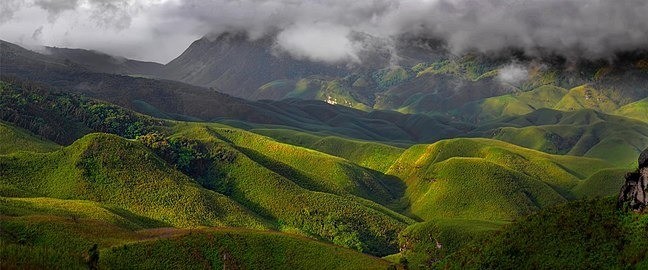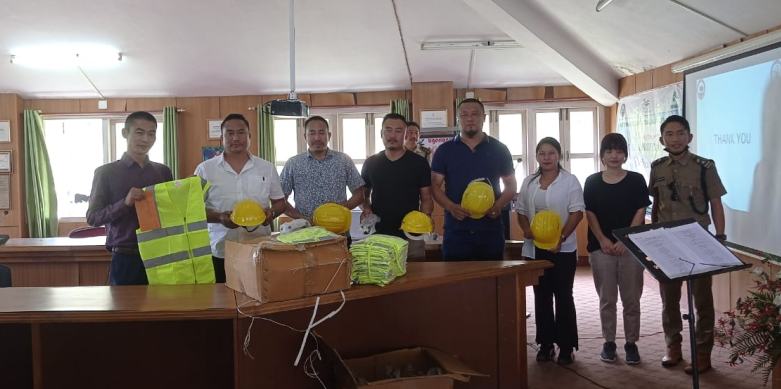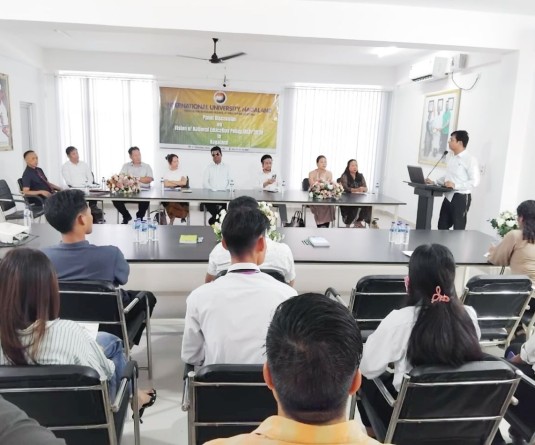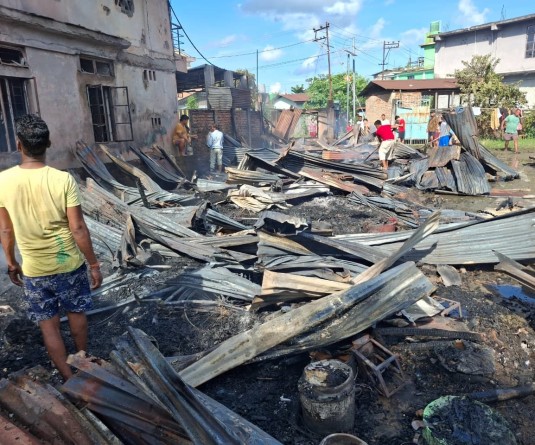A view of the Dzükou valley. (Photo Courtesy: Hkhehoviy@twitter)

 Forest Department donated Fire Safety equipments to Southern Angami Youth Organization. (Morung Photo)
Forest Department donated Fire Safety equipments to Southern Angami Youth Organization. (Morung Photo)
Sensitisation on importance of Dzükou valley conservation and its impact on the overall Himalayan Biodiversity region
Morung Express news
Kohima | July 15
Er Keheibamding Thoü, Senior Research Associate, Department of Environmental, Forests and Climate Change, Government of Nagaland observed that excessive use of its resources, development of Dzükuo water source through pipelines were possible source exploitation posing danger to the valley. Thoü stated that the average rainfall in the Dzükuo Valley has decreased to 1200-1800 mm from 1800-2000mm in recent years.
He said this during the programme on the topic ‘Sensitisation on the importance of Dzükou Valley conservation and its impact on the overall Himalayan Biodiversity region’ held as part of the National Mission on Himalayan Studies (NMHS). It was organized by Department of Environmental, Forests and Climate Change, Government of Nagaland at the PCCF & HOFF Office Conference Hall, Kohima on July 15.
Threat from dwarf bamboo
The Senior Research Associate also observed that the dwarf bamboo (Yushania Rolllaona), considered an endemic and pioneer species of Dzükuo valley becomes invasive to several species and surrounding forested areas of the valley following forest fire, the dominant component suppressing other native species.
Several species are facing survival threat and a few are on the verge of extinction since the regeneration of the bamboo species is very fast and grows rigorously after fire with the rhizomes growing deep in the soil, he maintained. Without control, the entire valley, he viewed that the entire valley and the surrounding hills will be covered by the dwarf bamboo.
Thoü suggested some control mitigation and control measures which were scientific and traditional in nature. Foremost among them was traditional practice of digging around the bamboo with shovel cutting fire lines and trimming in between the thick bamboo or areas where flowers species are likely to be present. Another scientific practice, he mentioned was barrier technologies for environmental management.
In the presentation, he also suggested steps to conserve the valley resources eminent among them were practice of reforestation and afforestation; check over forest clearance for agricultural and habitation practice and effective waste management.
Forest Fire Management
Speaking on Forest Fire Management Plan, Pezaneinuo, Forest Range Officer, Kohima range said that the knowledge of the locals were very important in combating forest fires. She said preventive measures were important to take precautions before forest fire season.
During occurrence of fire incident, combating was necessary for prompt action. As such, the role of local, administration needs to be incorporated altogether for rapid response. Moreover, apart from keeping necessary equipments, building fire watchers and watch towers in advance, the range officer suggested training and patrolling of stakeholders.
Earlier, Supongnukshi IFS, Chief Conservator of Forest & Principal Investigator, NMHS delivered the introductory address. The programme was chaired by Keneikrul Noswe, Forest Range Officer, Social Forestry Range.
The Forest Department, Silviculture Range donated Fire Safety equipments to Southern Angami Youth Organization. Others present at the programme were Southern Angami Students Union (SASU) and representatives from Phesama, Kigwema, Jakhama, Viswema and Khuzama village.





